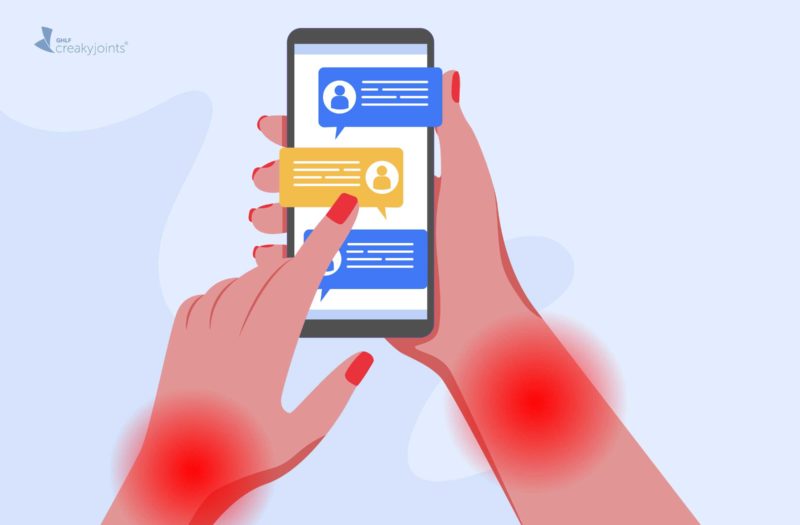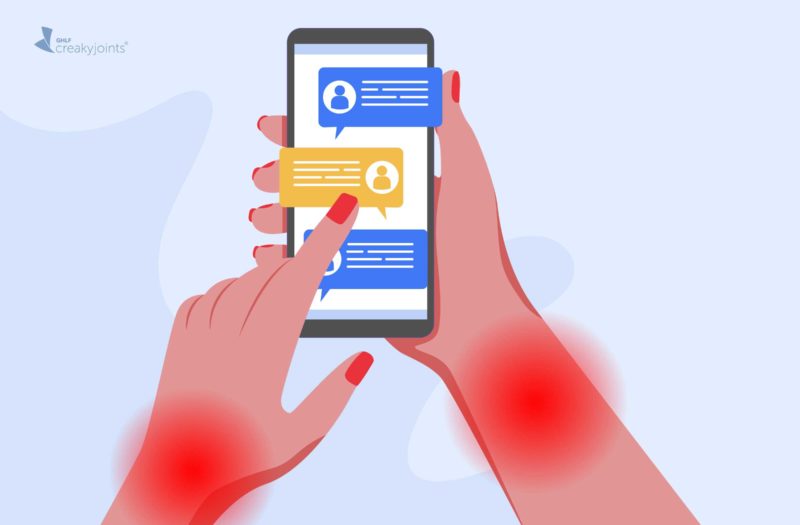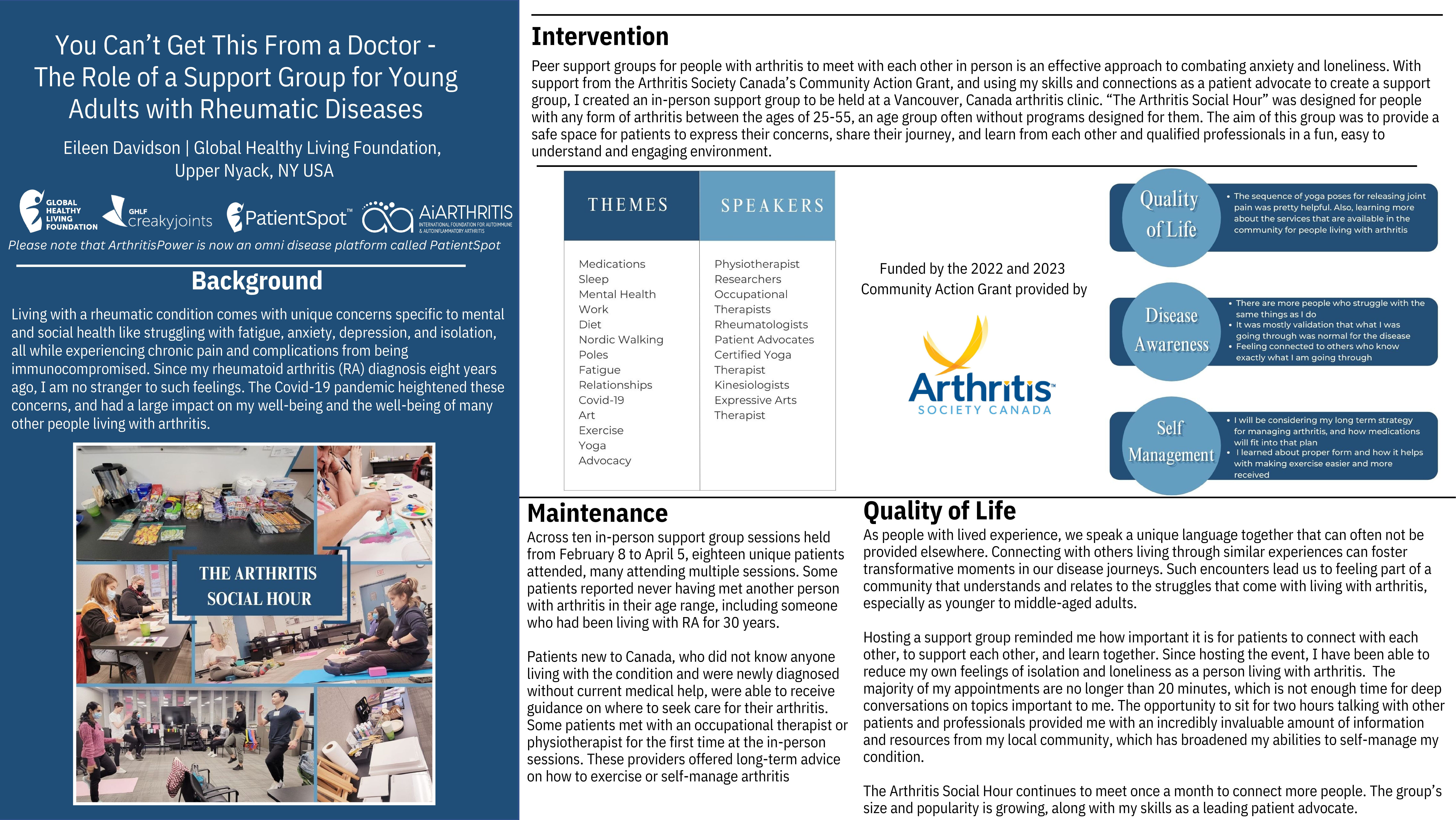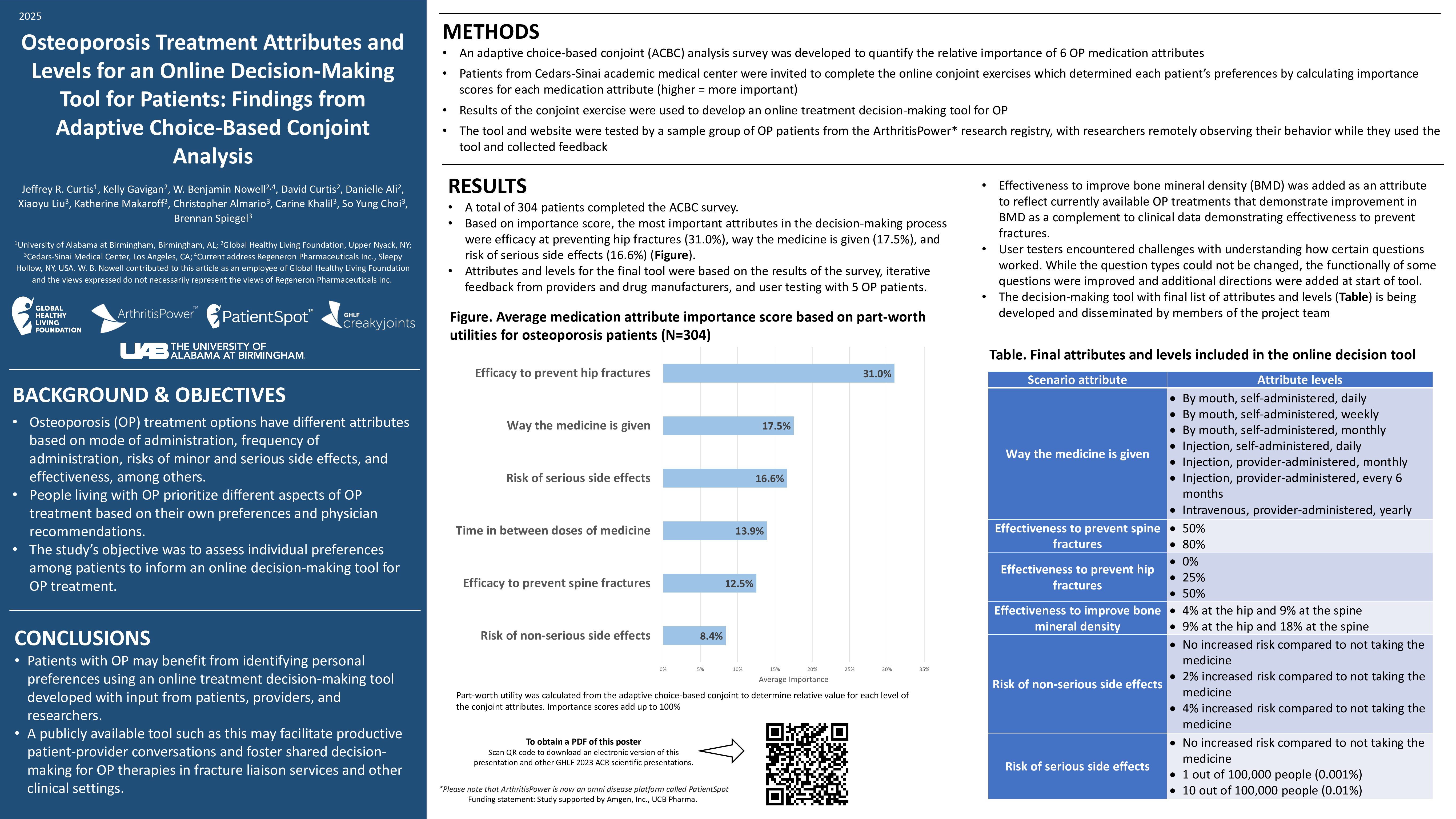Texting and typing are part of everyday life — and usually essential for working, communicating with loved ones, or ordering household items online. During the COVID-19 pandemic, you’ve likely been spending even more time than usual on your computer or phone to catch up with loved ones or take care of essential errands.
But if you live with arthritis that affects your fingers or hands, you know what a toll these basic activities can take on tender joints. Much like athletic activities, repetitive keystrokes can put you at risk for injury or aggravate existing conditions like arthritis, per Rush University Medical Center. Texting and typing may also affect less obvious joints, like your wrists, elbows, shoulders, neck, and back.
Luckily, there are many ways to adapt how you use technology to make texting and typing easier and less painful, even if you have to spend the majority of your day doing it.
Tips for Pain-Free Texting
When you’re texting, the carpometacarpal (CMC) joint at the base of your thumb is primarily affected.
“That particular joint also tends to be impacted by arthritis,” says occupational therapist Julie Dorsey, OTD, OTR/L, an associate professor of occupational therapy at Ithaca College in Ithaca, New York. “Because of that, the motion of texting could cause a flare-up.” Read more here about basal joint arthritis.
Get a phone grip
One way to take pressure off your thumbs is to use a removable grip for your phone (think the kind that attaches to the back of your phone and pops outward, resembling a toggle) so you can use two fingers (commonly, your pointer and middle finger) to hold your phone. This frees up your thumbs to more easily text, rather than needing to text and grip your phone at the same time.
Don’t hold the phone while texting
“You can also set the phone down on your lap or on a surface, so you’re not holding the phone at all while you’re texting,” says Dorsey.
Use a stylus
If you do so, you may find it easier to text using your index finger or a stylus, a pen-like object made for screens that you can grip like a pencil. Look for a wider stylus if you have decreased range of motion so you don’t need to grip as tightly.
Use smartphone features to minimize typing
Today’s smartphones also provide many features that make it easier to text if you live with arthritis. Consider taking advantage of these:
- Voice dictation: “With every version of updated software and new phones, voice dictation gets better and more accurate,” says Dorsey. It only takes a few steps to set up and can be an easy way to give your fingers a break from texting.
- Predictive text: This can sometimes be a helpful way to reduce the number of times you have to tap a key. Your phone uses an algorithm to complete phrases you typically write or that are commonly used in language, so you only need to click on the words it recommends, rather than typing them out letter by letter.
- Swipe typing: This feature on smartphones allows you to glide from one letter to the next to write a word. You can use either a finger (like your index finger) or a stylus to quickly form words without constant tapping. “It takes away some of that repetition on your thumbs and shifts the movement so you can use your whole hand,” says Dorsey.
- Horizontal screens: Your phone may switch to a larger, wider keyboard when you flip it horizontally. “This makes the letters a little bigger so they are easier to hit, and you’re not needing to correct yourself as much,” says Dorsey.
Change things up
Keep in mind that you don’t have to stick to one method. If you get stiff or sore from texting in a certain way, modify so that you’re using a different finger, a tool like a stylus, or even voice dictation to get your message across.
Take breaks and respond at your own pace
“Holding the phone for long periods of time can also cause discomfort in the wrist because you’re holding it stable, so pay attention to all of the joints in the hand and how they’re feeling,” says Dorsey. “If you’re in a long text chain, do a quick body scan and take breaks instead of waiting until you’re in a lot of pain.”
Tips for Pain-Free Typing
It’s important to set up an ergonomically healthy workspace, especially if you’re working from home during the pandemic. A big part of this is thinking about your computer keyboard and how you type.
Use a ‘pencil test’ to check your wrist alignment
“You want your wrist to be as neutral as possible, so not in extension or flexion,” says Dorsey. “One way you can test that is by taking a pencil and laying it on the back of your hand and forearm. It should be able to lay flat if your wrist is in a neutral position.”
Even 10 degrees of extension (when your palm is bent upward) or flexion ( when your palm is bent downward) increases the pressure in your carpal tunnel. The carpal tunnel is a narrow passageway that’s surrounded by ligaments and bones on the palm side of your hand, per the Mayo Clinic. When the median nerve within the carpal tunnel is compressed, you might have numbness, tingling, and weakness in the hand and arm, also known as carpal tunnel syndrome.
You’re at higher risk of carpal tunnel syndrome if you have rheumatoid arthritis, which can affect the lining around tendons in your wrist and increase pressure on the median nerve.
Use accessories to help your wrist stay neutral
Use a wrist rest or even folded towels to prop your wrists into a neutral position as you type.
Consider the height of your desk or typing surface
Also think about your desk height: The optimal height is usually lower than you might think. Your elbows should be at greater than 90 degrees for neutral wrist position and blood flow.
Avoid using a too-small keyboard
Keyboards also tend to put your hands in awkward positions that mimic ulnar deviation, a condition in which the fingers drift outward toward the pinkies, which rheumatoid arthritis patients are particularly prone to. Avoiding these positions can help protect your joints in the long-term.
“Usually our keyboards bring our hands in front of us and they go into an ulnar deviation position,” says Dorsey. If you can, avoid typing on a laptop or mini keyboard that causes your wrists to bend outward. Instead, try to use keyboards that are slightly wider.
Keyboards that require less strike force (versus those with large keys that require more pressure) can also help you avoid unnecessary strain on the fingers over the course of the workday.
Remember: Take Frequent Breaks
One of the most important things you can do when texting or typing is to take frequent breaks — even if they’re just 20 seconds each for a quick stretch.
“For every page you type, you could open and close your hands into gentle fists five times, which puts your fingers through the full range of motion and lubricates the joints,” says Dorsey. “Small things like that won’t impact your productivity, and will probably make you more productive because you aren’t going to be limited by pain.”
Being conscious of taking breaks (even if you have to set a timer) is especially important when you’re focused on a task, because it can be easy to forget to pay attention to your body’s signals.
Not Sure What’s Causing Your Pain?
Check out PainSpot, our pain locator tool. Answer a few simple questions about what hurts and discover possible conditions that could be causing it. Start your PainSpot quiz.
Carpal tunnel syndrome. Mayo Clinic. February 1, 2020. https://www.mayoclinic.org/diseases-conditions/carpal-tunnel-syndrome/symptoms-causes/syc-20355603.
Interview with occupational therapist Julie Dorsey, OTD, OTR/L, an associate professor of occupational therapy at Ithaca College in Ithaca, New York
When Technology Hurts. Rush University Medical Center. https://www.rush.edu/health-wellness/discover-health/when-technology-hurts.












